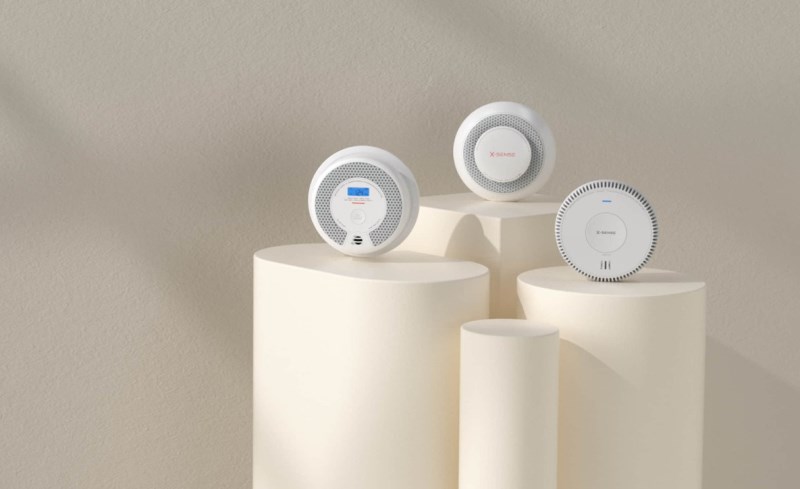All About Smoke and Carbon Monoxide Detector
Carbon monoxide (CO) detectors and smoke detectors are frequently confused with one another. And for good reason: the two gadgets are simply little boxes (typically battery-powered) that generate an alarm when their sensor detects a certain toxic chemical in the home in dangerous concentrations. However, since smoke and carbon monoxide are different gases, these detectors are distinct tools with particular uses.
Are a smoke detector and a carbon monoxide detector the same thing?
Combination smoke and carbon monoxide detector detectors have very different roles in home safety, despite the fact that you would think they are the same thing. It can be challenging even to find them because of their packaging, descriptions, and comparable locations on store shelves or online. There’s a strong probability that you already have a smoke detector in your house (one or more). As carbon monoxide detectors are less widespread, it is less likely that you have one.
Additionally, the goals of smoke and carbon monoxide detectors differ. A carbon monoxide detector sounds when levels of this dangerous, colourless, and dorless gas are too high in your home, essentially alerting occupants who are sleeping when a fire breaks out during the night. Poor combustion processes in your home’s appliances, most frequently in heaters, can cause carbon monoxide levels to increase and jeopardize your safety. When one of these detectors sounds an alarm, the other usually does not as well. This is because a combination of smoke and carbon monoxide detector can frequently coexist, or vice versa.
However, for some fires, the sirens in both types of detectors may sound simultaneous. Carbon monoxide emissions may occur in your home if there is smoke present. But smoke won’t often be present if there are harmful levels of carbon monoxide in your house. Because of this, it’s beneficial to have both types of detectors installed in your home, allowing you to always feel safe.
How to avoid mixing smoke detectors from carbon monoxide detectors when using gas detectors
In the event of a fire, a combination of smoke and carbon monoxide detector sound the alarm, whereas a carbon monoxide detector notifies you when a combustion appliance in your home is emitting harmful carbon monoxide. Each time, a sensor picks up a particular gas and an alert goes off. Both detectors are therefore quite effective in increasing the safety of your home.
What Makes Smoke Alarms Necessary?
Residential structures experience more fire fatalities than any other form of building. More than half of all fire-related fatalities in residential structures take place while the residents are unconscious and asleep. Long before the fire even reaches the inhabitants, asphyxiation frequently causes death. Installed smoke alarms provide early smoke detection and provide the inhabitants with the crucial few seconds they need to flee. The requirement that alarms be connected to the building’s electrical wiring stipulates that there shall be no disconnecting mechanisms other than the primary over-current protection (fuse or circuit breaker). No switches, connectors, or mechanical disconnects are allowed between the electrical service panel and the alarm; instead, alarms must be linked directly to the building’s wiring system.
What is The Best Combination of Detectors?
It is recommended that smoke detectors be installed in every room of a building for the best protection. But since this is not always feasible, a reasonable rule of thumb is to at least make sure that an alarm is installed on each floor of a building. Ionization and visual alarms operate well in these circumstances. Only heat alarms should be installed in bathrooms, just like in kitchens. Steam will cause any other form of the detector to go off, which will result in a lot of false alarms.
Fire detection devices that can awaken sleeping persons are required by law to be installed in landlord-owned homes with a variety of tenants. This typically calls for the existence of interconnected, mains-powered, battery-backed smoke or heat alarms. There is simply no justification for not installing alarms in houses that can detect smoke, fire, and carbon monoxide because doing so is a simple operation and might save countless lives!
Conclusion
Although deaths from carbon monoxide poisoning are less frequent than those brought on by fire, the frequency of these fatalities is still too high and these deaths are completely avoidable. Thank goodness, it appears that a growing number of homeowners are beginning to understand the risks involved with not installing carbon monoxide, smoke, and fire detection alarms in their homes. Knowing exactly what each alarm accomplishes, where to put it, and any rules that apply to its use in landlord-owned properties and new construction are all recommended before putting any of these detecting systems in a building.








